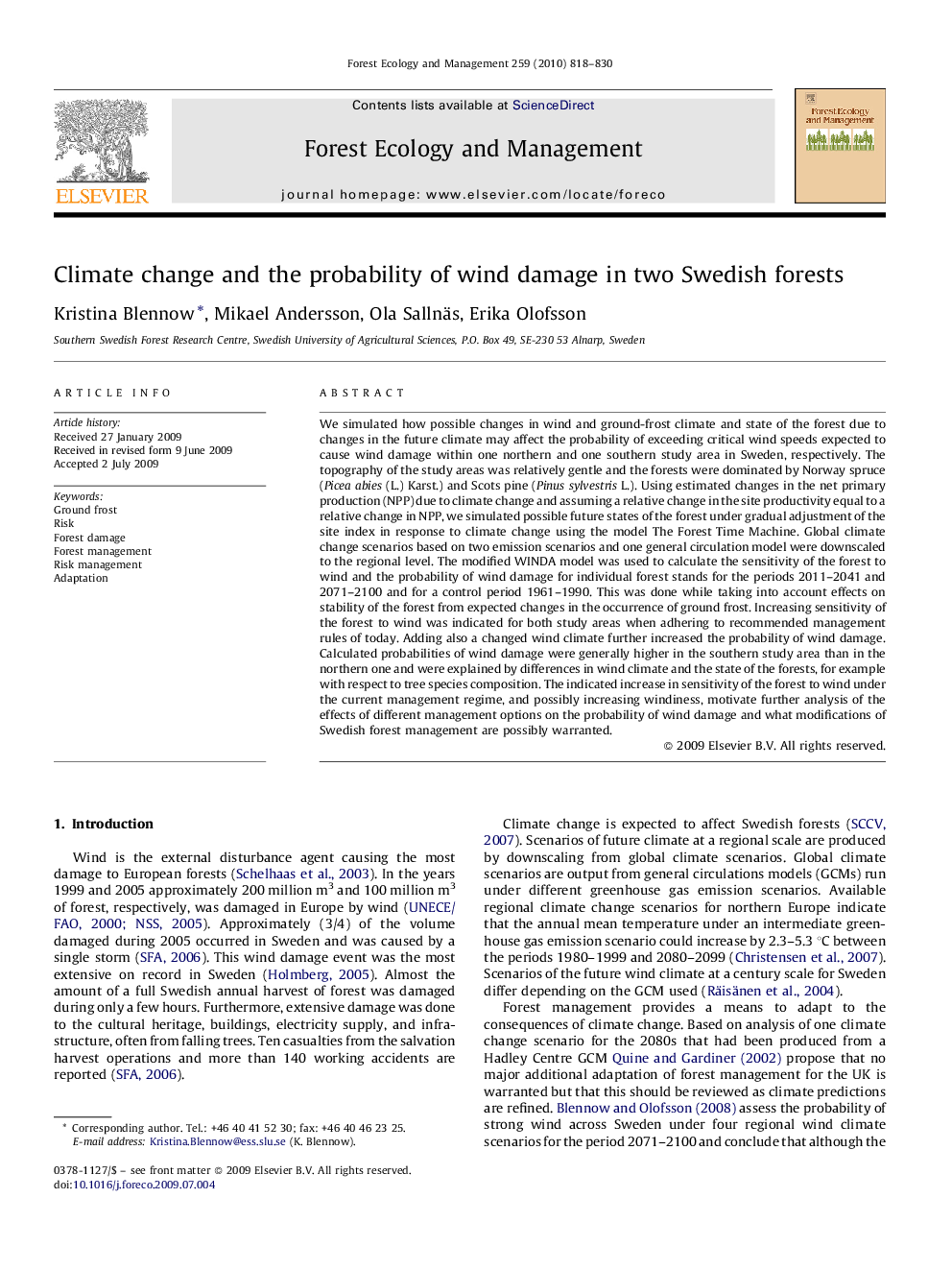| Article ID | Journal | Published Year | Pages | File Type |
|---|---|---|---|---|
| 88534 | Forest Ecology and Management | 2010 | 13 Pages |
We simulated how possible changes in wind and ground-frost climate and state of the forest due to changes in the future climate may affect the probability of exceeding critical wind speeds expected to cause wind damage within one northern and one southern study area in Sweden, respectively. The topography of the study areas was relatively gentle and the forests were dominated by Norway spruce (Picea abies (L.) Karst.) and Scots pine (Pinus sylvestris L.). Using estimated changes in the net primary production (NPP) due to climate change and assuming a relative change in the site productivity equal to a relative change in NPP, we simulated possible future states of the forest under gradual adjustment of the site index in response to climate change using the model The Forest Time Machine. Global climate change scenarios based on two emission scenarios and one general circulation model were downscaled to the regional level. The modified WINDA model was used to calculate the sensitivity of the forest to wind and the probability of wind damage for individual forest stands for the periods 2011–2041 and 2071–2100 and for a control period 1961–1990. This was done while taking into account effects on stability of the forest from expected changes in the occurrence of ground frost. Increasing sensitivity of the forest to wind was indicated for both study areas when adhering to recommended management rules of today. Adding also a changed wind climate further increased the probability of wind damage. Calculated probabilities of wind damage were generally higher in the southern study area than in the northern one and were explained by differences in wind climate and the state of the forests, for example with respect to tree species composition. The indicated increase in sensitivity of the forest to wind under the current management regime, and possibly increasing windiness, motivate further analysis of the effects of different management options on the probability of wind damage and what modifications of Swedish forest management are possibly warranted.
